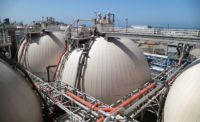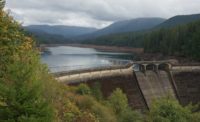Oregon's Willamette Water Supply System Commission has awarded Tempe, Ariz.-based Sundt Construction a construction manager at-risk contract for its $405-million new water treatment plant in Sherwood that will include major seismic upgrades and is part of an estimated $1.6-billion program to augment regional water supply.
The partnership between the Tualatin Valley Water District and the Cities of Hillsboro and Beaverton says construction on the plant, set to initially treat 60 million gallons of water per day with future potential for twice that capacity, began last month. The facility is slated to begin delivering water to customers in 2026.
A critical factor in the design of the plant involved seismic resilience. The 30-acre project site is near the Cascadia subduction zone, an active fault line off the Pacific coast shoreline between northern California and British Columbia.
David Marciniak public & business outreach specialist for Willamette Water Supply Program, says after an earthquake, "the facility has to be providing water and meeting level of service goals within 48 hours to provide water to the community,”
The extensive seismic design requirements were significantly above the industry norm, says Mike Neher, Sundt project manager.
The Portland, Ore. office of CDM Smith is serving as the primary plant designer.
Throughout the preconstruction and bidding phases, Sundt vetted team members to ensure that they understood the seismic requirements.
“The shop drawing and seismic design phases are where the greatest effort lies to ensure conformance with the contract documents,” Neher says. “We have contracted with most of our equipment vendors and subcontractors within the first few months of the 3.5-year project. This was to ensure we had ample time for the shop drawing and seismic design phases, as well as the procurement of materials and equipment.”
As part of the construction manager at-risk delivery method, Sundt will act as the contractor, directing nearly 70 scopes of work to develop the project. “Sundt is pleased to be selected to bring this critical infrastructure to the communities,” he said.
To clean the water to meet drinking water standards, the plant will use multiple steps. The process will begin with raw water from the nearby Willamette River flowing through intake screens into the new facility. It then will use various methods of enhanced coagulation sedimentation, ballasted flocculation, ozonation, ultraviolet light, granulated activated carbon and sand filtration, and chlorine disinfection to clean the water.
The upgrade will create an emergency facility able to produce drinking water for emergency responders and the community within 48 hours of a major seismic event.
The project also includes construction of a 66,400 sq-ft main administration and operations building, a pump station, and 10-million-gallon, pre-stressed, concrete water tank. as well as a new east-west road connecting the cities of Tualatin and Sherwood.





